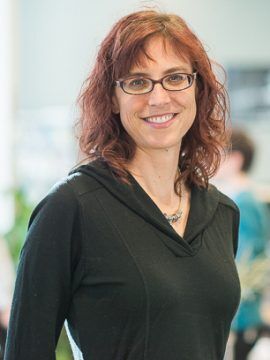
Tearing down barriers in education
By Colten Kamlade, Staff reporter
The presentation What’s Open about Open Pedagogy was held in the Aboriginal Gathering Place at the New Westminster campus of Douglas College October 26.
Christina Hendricks, a philosophy professor at UBC, spoke at the event. Snacks and refreshments were offered, and at least a dozen people attended. Though open pedagogy might not be a phrase you hear every day, within academic circles it has been a hot topic of conversation in the last couple of years.
Hendricks said a number of bloggers have been posting about the subject.
“There was this huge explosion of blog posts, from April to May of 2017, lots and lots of people saying ‘here’s what I think open pedagogy is,’” she said.
Though there has been plenty of discourse, Hendricks said it is still unclear what exactly is meant by the term.
“Still even now I’m not sure I have a good handle on it,” she said.
Despite the difficulties of creating a precise definition, Hendricks said she believes she has found common themes amongst the different ideas.
“I pulled some things out to try to present to you and say ‘here’s what it seems to be what mostly people think open pedagogy is,’” she said.
Hendricks said she believes it is mostly about traditional barriers in education.
“[Open pedagogy is about] breaking down walls,” she said, adding that there are multiple ways to accomplish that. “Giving students the ability to be creative in coming up with new ways of doing the course [is key.]”
Hendricks gave the example of using open textbooks when teaching a class.
“Open textbooks are like regular textbooks that you would assign in a course, but it has an open license, meaning, usually it doesn’t cost anything unless you want to print it, and then it’s just a small amount to print. It has the ability for people to repost it, to revise it, to change it, to send it to other websites,” she said.
With open textbooks students have the opportunity to contribute to textbooks, whether through added biographies or annotations, and to actually spend time on an assignment that will not just be thrown in the recycling bin after it has been marked.
Hendricks also expressed concern with the use of the term open pedagogy, due to its vague definition. “Does it help to call such things open pedagogy … [or] is it just confusing things?” she asked. “Because here are a number of other words that talk about similar things. Self-directed learning … connected learning, student as a producer.”

